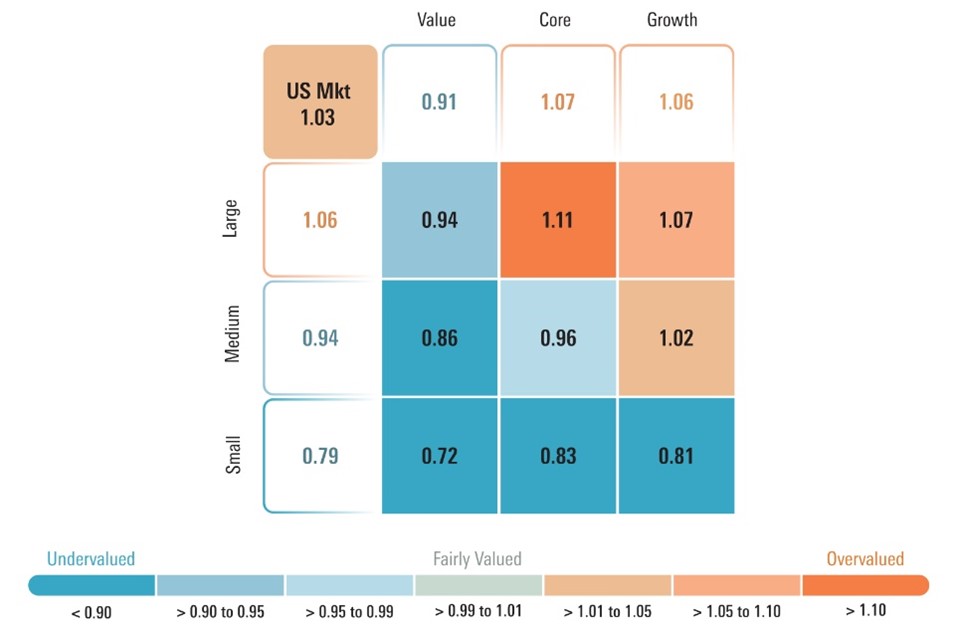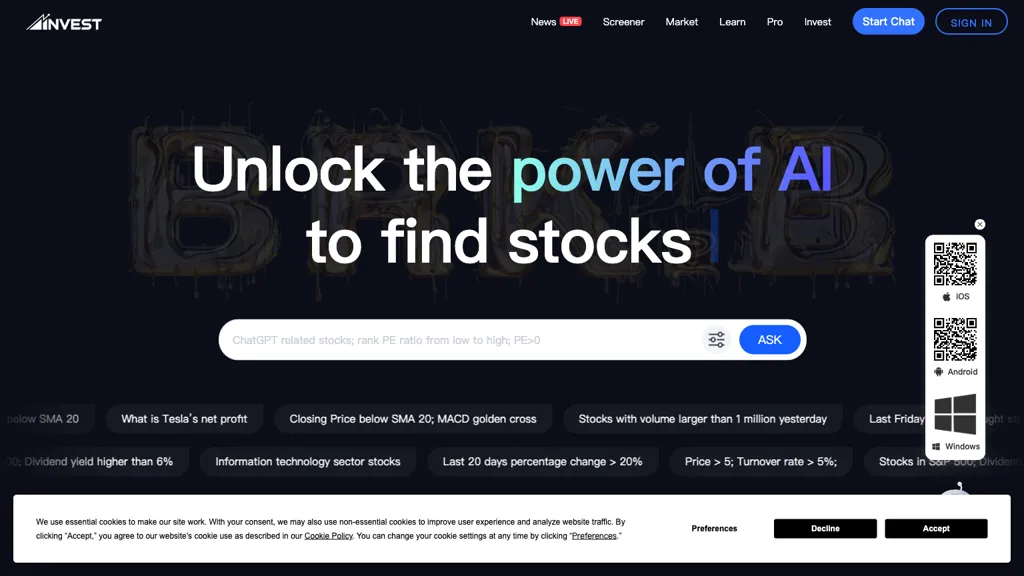Market coverage is an important factor when evaluating AI platform for predicting or analyzing stocks which determines the depth and breadth of markets and assets that you are able to access. A platform with extensive market coverage allows you to diversify your portfolio, look for new opportunities around the world, and adjust to different trading strategies. Here are the top 10 ways to evaluate the market coverage provided by these platforms.
1. Evaluate Supported Asset Classes
Stocks - Check that the platform is able to cover the major stock markets (e.g. NYSE NASDAQ LSE HKEX) as well as includes mid-caps, small-caps, and large-caps.
ETFs. Make sure the platform offers a variety of ETFs so you can get diversified exposure.
Futures and options: Determine whether the platform is able to handle derivatives like options, futures and other leveraged instruments.
Commodities and forex: Check whether your platform has Forex and commodities, precious metals and energy commodities.
Cryptocurrencies - Check to see if your platform supports the most popular cryptocurrencies, including Bitcoin, Ethereum and altcoins.
2. Check the Coverage Area
Global markets. Your platform should cover the largest market in the world including North America Europe Asia-Pacific and emerging countries.
Regional focus: Determine whether your platform has a particular focus on a region or market that matches to your trading needs.
Local exchanges. Determine if the platform allows for local or region exchanges, that are relevant to your geographical location or your business's strategy.
3. Assessment Real-time vs. Data that is delayed
Real-time Data: Be sure that the platform has real-time information for trading, and to make timely decisions.
Delayed information: Determine whether delayed information is available at no cost or a discounted price that could be sufficient for investors with a long-term perspective.
Latency of data. Find out whether your platform reduces the latency of real-time data feeds.
4. Review Historical Data Available
Depth and breadth of historical data: Make sure that the platform has ample historical data available (e.g. for at minimum 10 years) to allow backtesting.
Look for granularity. Historical data could include daily, intraday and weekly the granularity.
Corporate actions: Check if the historical data includes dividends and stock splits.
5. Examine the Order Book and Market Depth Data
For better price discovery Make sure the platform includes Level 2 information.
Check the bid-ask ranges to make sure you are getting the most accurate price.
Volume data: Verify that the platform has specific volume data that can be used to evaluate market liquidity.
6. Examine the coverage of Indices and Sectors
Major indices: Ensure that your platform supports major indices like the S&P 500 (e.g. NASDAQ 100 or FTSE 100), for index-based benchmarking.
Information from specific industries to perform a targeted analysis, you should determine if the platform has information for specific industries (e.g. technology, health care, technology).
Custom-designed indices. Make sure that the platform supports creating and tracking custom indices according to your needs.
7. Integrate News and Sentiment Data
News feeds : Make sure you use a platform that incorporates live news feeds, preferably from reliable media outlets (e.g. Bloomberg and Reuters), for the most important market events.
Sentiment analysis Check to determine whether your platform offers sentiment analysis tools using data from news, social media, sources, or any other data source.
Trades driven by events: Check the platform's support of event-driven trades (e.g. reports on economic data, earnings announcements).
8. Check for Multimarket Trading Capabilities
Cross-market trade: Make sure the platform supports trading across asset and market categories from a common interface.
Conversion of currencies Check to see if you can convert currencies automatically for international transactions and also if you have accounts that support multi-currency transactions.
Verify that you are in compliance with time zones.
9. Examine the coverage of alternative sources
Alternative data: For more unique insights, check if your platform uses alternative data (e.g. satellite imagery, web traffic or credit card transactions).
ESG data - Verify that the platform offers environmental, governance, and social data (ESG). This is essential for a the socially conscious investment.
Macroeconomic data: Make sure the platform has macroeconomic indicators (e.g. inflation, GDP, interest rates) for analysis of fundamentals.
Review Feedback from Customers and Market Reputation
Feedback from users: Read reviews from users to assess the credibility of the platform as well as market coverage.
Verify the credibility of the platform in terms of its coverage or awards for industry.
Look for testimonials that demonstrate the platform's efficiency in specific assets and markets.
Bonus Tips:
Trial period - Use the demo or trial for free to test the coverage of data and market coverage.
API access: Determine if your platform's API is able to access market data programmatically in order to perform custom analyses.
Customer support: Ensure the platform can help with any market-related queries or data-related issues.
With these suggestions, you can effectively assess the market coverage of AI platform for predicting and analyzing stocks and ensure that you select the one that gives you access to the market and the information that you require for a successful trading. Market coverage is important to diversify portfolios, find new opportunities, and adjust to changing market conditions. Take a look at the most popular options ai blog for website info including ai for stock trading, trading ai, ai for stock trading, AI stock trading, best AI stock trading bot free, ai trading tools, trading with ai, using ai to trade stocks, ai trade, best AI stock trading bot free and more.

Top 10 Suggestions For Evaluating Ai Trading Platforms For Their Flexibility And Trialability
Assessing the trial and flexibility choices of AI-driven stock prediction and trading platforms is essential to ensure they satisfy your requirements prior to committing to a long-term subscription. Here are the top 10 ways to evaluate each feature:
1. Get the Free Trial
TIP: Ensure that the platform you're considering offers a 30-day free trial to evaluate the capabilities and features.
Why: You can test the platform for free cost.
2. Trial Time and Limitations
TIP: Make sure to check the validity and duration of the trial (e.g. restrictions on features or access to data).
Why: Understanding the constraints of a test will assist you in determining whether an exhaustive assessment is offered.
3. No-Credit-Card Trials
Try to find trials that don't require you to enter your credit card details prior to the trial.
Why: This reduces any risk of unforeseen charges and makes opting out simpler.
4. Flexible Subscription Plans
TIP: Make sure that the platform provides flexibility in subscriptions (e.g. quarterly or annually, monthly) and clear pricing different tiers.
Why: Flexible plan options let you customize your commitment to suit your needs and budget.
5. Customizable Features
TIP: Ensure that the platform you are using allows for customization such as alerts, risk settings, and trading strategies.
Why is that customizing the platform adapts to your particular trading goals and preferences.
6. The Process of Cancellation
Tips: Make sure you know how simple it will be to downgrade or cancel your subscription.
The reason: A simple cancellation process ensures you're not bound to a contract that doesn't work for you.
7. Money-Back Guarantee
Tips: Search for websites that provide a money-back guarantee within a specified time.
The reason: It is a safety net in case the platform is not up to your expectations.
8. Access to Full Features During Trial
TIP: Make sure that the trial provides access to all the core features that are not limited to a trial version.
Why: You can make the right choice based on your experience by testing every feature.
9. Support for customers during trial
Tips: Make sure you contact the customer support during the test period.
Why: It is important to have reliable support so that you can solve issues and make the most of your experience.
10. Post-Trial Feedback Mechanism
Tips: See if you can provide feedback on the platform after the trial. This will allow them to improve their services.
The reason: A platform that is characterized by a an extremely high level of user satisfaction is more likely to grow.
Bonus Tip: Scalability Options
If you are seeing your trade grow, the platform should have better-quality options or plans.
If you take your time evaluating the options for trial and flexibility and flexibility options, you will be able to decide for yourself the possibility of deciding if you think an AI trade prediction and stock trading platform is the right option for you prior to making an investment. See the best what is it worth about how to use ai for stock trading for more examples including chart analysis ai, best stock prediction website, how to use ai for stock trading, chart analysis ai, best ai trading platform, best ai for stock trading, AI stock predictions, best ai trading platform, ai share trading, ai investment tools and more.
